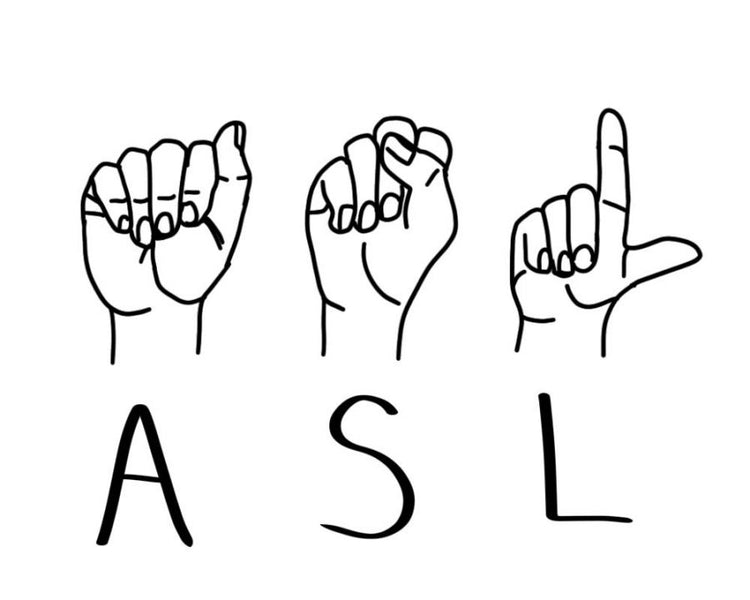Table of Contents
- Introduction to American Sign Language
- The Importance of an ASL Dictionary
- Learning American Sign Language Words
- Popular Resources for ASL Learning
- Basic and Common Signs in ASL
- Learning ASL online and via video dictionaries
- Tips for Beginners: How to Learn American Sign Language
- Conclusion
- FAQs
Introduction to American Sign Language
American Sign Language is the dynamic, expressive language currently in use by millions of people in the Deaf community of North America. ASL is a fully formed language, independent of spoken English, having its particular grammar, vocabulary, and specific cultural nuances. It serves as a potent tool to allow persons who are Deaf or hard of hearing to communicate thoughts, feelings, and ideas through specific hand movements, facial expressions, and body language.
It is a great journey of learning ASL, whether your focus is engaging with the Deaf community, becoming an interpreter, or adding an invaluable skill to your personal development. In this article, you will get to learn about ASL, explore some sign language words, and find links to connect you with an ASL dictionary for your future quick references.
The Importance of an ASL Dictionary
A dictionary of ASL is a very important tool for those who want to learn American Sign Language words. Unlike spoken languages, ASL cannot be fully represented in written text; because of this, having an available visual reference is crucial in mastering the moves and expressions constituting the language. This is very important in that an ASL dictionary, more especially an ASL video dictionary, would be able to provide the learner with visual representations of words where correct practice and understanding would be possible.
There are many online resources you could use that offer video-based ASL dictionaries, including Lifeprint (Lifeprint ASL Dictionary), Handspeak (Handspeak ASL Dictionary), and Signing Savvy (Signing Savvy). You will be able to view literally thousands of ASL signs, along with video demonstrations that make a difference in learning every nuance of each sign.
Learning American Sign Language Words
One of the major keys to learning ASL is vocabulary building. In learning how to sign ASL, practice is important, and an ASL dictionary helps individuals understand how words are conveyed through specific signs. The first basic signs in sign language that one ought to learn include "hello," "please," and "thank you." These are the basic signs that one needs to know to build simple, everyday conversational skills.
First of all, it is good to view some of the common signs in ASL. Online courses, such as Start ASL, even go as far as to provide a guide for the top 25 ASL signs for beginners (Top ASL Signs) of the language. Learning these initial or starter set of signs enhances confidence and lays the foundation for higher vocabulary and sentences.
Popular Resources for ASL Learning
There are a number of excellent resources available for those looking to learn ASL. Below, we highlight some of the best resources and platforms that provide ASL dictionaries and learning materials:
- Lifeprint (Lifeprint Dictionary) - Created by Dr. Bill Vicars, Lifeprint offers a comprehensive dictionary with video examples and detailed information on how to sign various words.
- Handspeak (Handspeak) - This site includes thousands of video clips showing how to perform each sign, making it easy to follow along.
- Signing Savvy (Signing Savvy) - An online ASL dictionary that features clear videos for each word, including various regional sign variations.
- ASL Browser - The American Sign Language Browser is an online tool that allows you to look up specific words and watch video demonstrations of each sign.
- YouTube Channels (Learn How to Sign) - Video platforms like YouTube have many channels dedicated to learning ASL, with teachers providing lessons in real-time.
Basic and Common Signs in ASL
For a beginner, learning the basic signs in ASL is a good starting point. Some of the common sign language words for beginners in ASL include greetings, questions, and basic needs. Below are some important signs to get you started:
- Hello: Raise your hand up toward your forehead, then out away from the body as if giving a friendly salute.
- Thank You: Bring fingers up to your chin and move your hand out.
- Please: Place the hand on your chest and circle your hand.
It is simple to learn sign language words like these and become accustomed to signing as well as being able to communicate more effectively.
Learning ASL Online and Via Video Dictionaries
The internet is a great resource to learn ASL. Websites such as Signing Savvy and Lifeprint offer online, interactive dictionaries in which one can look up words and learn how to sign through videos. These dictionaries serve as a bridge for understanding how to correctly execute each sign.
Another great online resource is Handspeak. This website is highly respected in the ASL learning community for having a great library of words and phrases, all clearly videoed. Another option would be to utilize the ASL Browser (American Sign Language Browser)-a website that contains animated representations of ASL signs.
Also, online websites provide structured lessons on the fundamentals of sign language. For instance, Start ASL has lesson levels progressing from basic to higher stages so that you learn in a structured manner.
Tips for Beginners: How to Learn American Sign Language
Learning ASL can be fun and challenging if you're just starting out. The following tips will help in getting started with learning basic sign language:
- Start with the Basics: Familiarize yourself with basic sign language words before moving to complex phrases. Websites like Handspeak and Lifeprint provide excellent guides for beginner-friendly words.
- Practice Daily: Learning to sign ASL is like learning any other language, in that practice will help someone become a better signer. Set aside time each day to practice new signs.
- Use Video Resources: An ASL dictionary with video resources will be super helpful in seeing exactly how one is positioning hands and body. Use platforms such as Signing Savvy or YouTube to help view demonstrations.
- Join an ASL Community: The Deaf community is everywhere, and it's a great place to use your new skills. You'll learn ASL in context, conversational setting.
- Learn Finger Spelling: It is a crucial part of ASL as spelling out names and unfamiliar words happens very frequently. More importantly, consider it a foundation skill that would allow you to express any word for which there is no sign.
Conclusion
Learning American Sign Language is one of the most rewarding things one could do. Using an ASL dictionary and video sites can help master a good base of signs to proficiently communicate in ASL. First, learn basic sign language words. Next, add more vocabulary through video-based learning, and practice fluency with members of the Deaf community. Other resources are readily available on the websites Lifeprint, Handspeak, and Signing Savvy.
With these resources and tips at your fingertips, you are ready to begin the ASL journey. Whatever your reason for learning-pleasure, career, or social-will open doors to new connections and further cultural understandings.
FAQs
Q1: How should a total beginner learn ASL?
Beginner can learn first starting with the basic sign language words and practice it daily. It would be of great help if he can get hold of some ASL video dictionary like Signing Savvy or Handspeak which may enable visual learning. One can accelerate learning by joining an ASL class or getting in touch with members of the Deaf community.
Q2: Are there any good dictionaries of ASL online?
Yes, there are several excellent ASL dictionaries online, including Lifeprint (Lifeprint Dictionary), Handspeak (Handspeak ASL Dictionary), and Signing Savvy (Signing Savvy). These dictionaries provide video demonstrations of each sign.
Q3: How can I remember the signs I learn?
To remember the signs, practice them frequently, use them in conversations, and watch videos regularly. Creating a study routine that includes revisiting learned signs and integrating them into real-life situations can also help with retention.
Q4: Will this be hard to learn as I'm not a visual learner?
Being that ASL is a visual language, it may be a bit different to get used to if you are strictly not a visual learner. With constant practice, though, utilizing ASL video dictionaries and online lessons, you can become proficient in being able to recognize and use signs.
Q5: Where can I find more ASL resources?
To access more resources, refer to websites like Start ASL, Lifeprint, and Handspeak. The following websites offer detailed lessons, dictionaries, and other additional suggestions on how to learn ASL.



